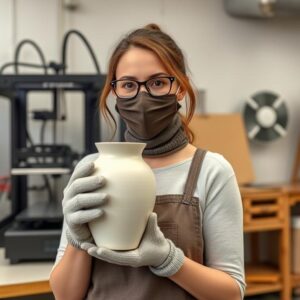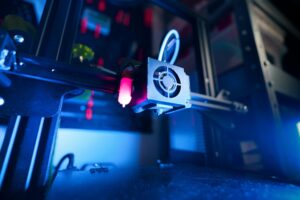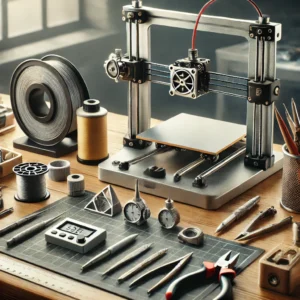3D Printing Safety 101: Guide to Protecting Yourself and Your Workspace
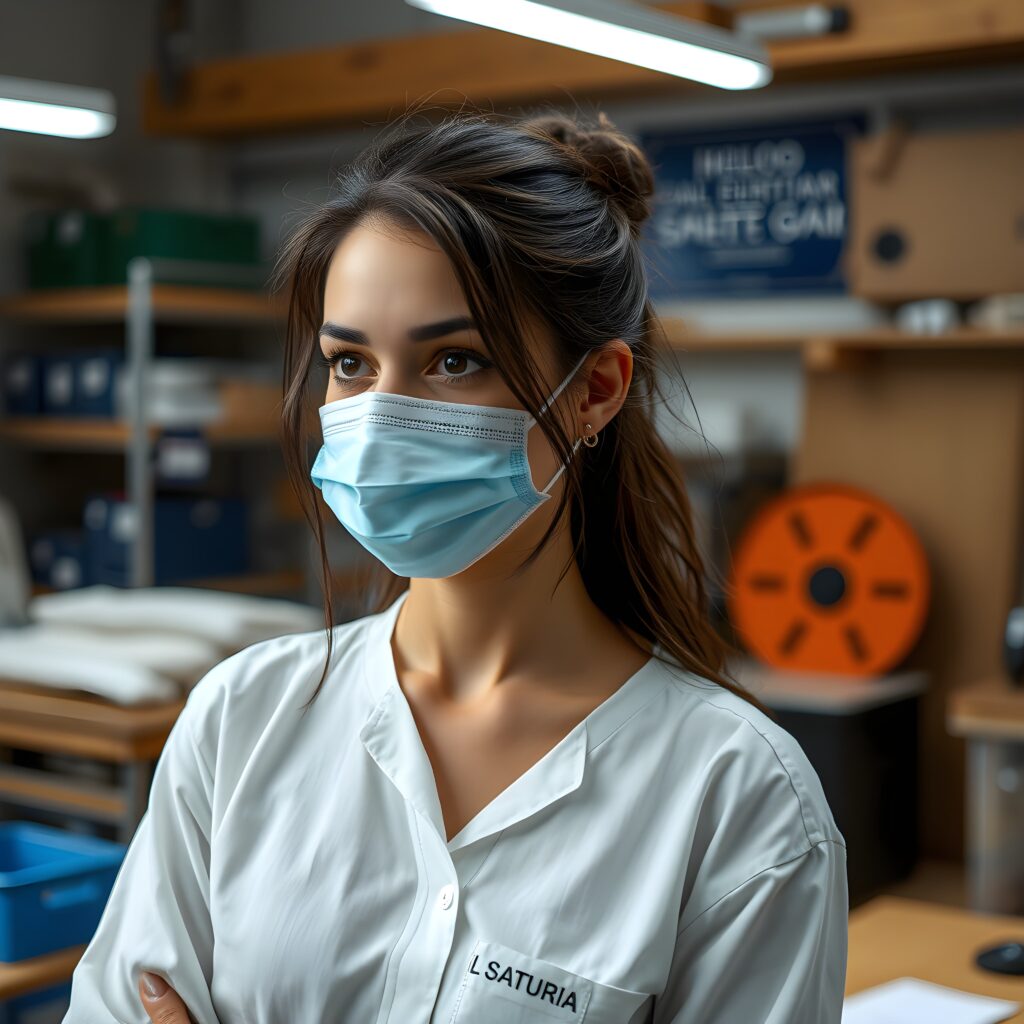
Learn essential 3D printing safety precautions to minimize risks and ensure a safe printing experience. Discover how to protect yourself and your workspace from potential hazards, and explore best practices for a safe and successful 3D printing journey.
3D Printing Safety 101
As 3D printing grows in popularity across both professional industries and hobbyist spaces, safety considerations are becoming increasingly critical. Whether you’re stringing filaments in your garage or managing a factory with multiple industrial-grade machines, ensuring a safe environment is essential. The technology, exciting as it is, presents risks like harmful fumes, fire hazards, material-related exposure, and physical injuries. These hazards remind us why a proper understanding of 3D printing safety is non-negotiable.
From harmful emissions released during printing to accidents involving heated parts or fragile materials, overlooking key safety measures can result in health challenges or damage to your workspace. While some materials like PLA are relatively harmless, others, such as ABS or resin, can produce toxic byproducts during use. Ensuring proper ventilation, careful handling, fire prevention, and workspace organization should remain priorities in any 3D printing setup.
With the right measures, 3D printing is a safe and beneficial technology for prototyping, designing, and creating. This guide explores the critical safety steps, covering material handling, workspace requirements, maintenance, and emergency preparedness. Understanding these essentials will enable you to enjoy the benefits of 3D printing while protecting yourself and those around you.
What Are the Risks and How Can You Manage Them?
1. Handling 3D Printing Materials
The key to safe 3D printing begins with understanding the materials you work with. The most common materials for Fused Deposition Modeling (FDM) printers are PLA (Polylactic Acid) and ABS (Acrylonitrile Butadiene Styrene), while resin-based printers use photopolymer liquids. These materials fall into different safety categories, with PLA being considered safer as it’s derived from renewable resources and emits minimal fumes. Conversely, ABS releases toxic fumes containing volatile organic compounds (VOCs) and ultrafine particles (UFPs) when melted, which can harm your respiratory system.
SLA/DLP resin printers require extra precautions. Liquid resin is toxic when it comes into contact with skin or eyes, and its fumes can irritate your lungs if proper ventilation is not ensured. Industrial applications using powdered materials, such as metal or ceramics, add a layer of risk due to potentially hazardous inhalation or skin exposure.
Protective equipment is non-negotiable when handling these materials. Use nitrile gloves to handle filaments, resins, and waste products. For powdered materials, wear a respirator mask to avoid inhaling fine particles. Always use safety goggles when working with resins to safeguard your eyes from splashes or fumes. Securely store raw and unused materials in airtight containers to prevent exposure to moisture or light, which may degrade their quality.
Proper Storage and Disposal of Materials
Preventing Material Degradation
Proper storage of 3D printing materials, such as filaments, resins, and powders, is not just about keeping things neat—it’s also essential for maintaining their usability and preventing degradation. Filaments , especially hygroscopic ones like PLA, PETG, or nylon, are highly sensitive to moisture in the air. If left exposed, they can absorb water, leading to brittle, brittle filament strands and poor print quality. To avoid this, always store filaments in airtight containers or resealable bags with desiccant packets to absorb excess moisture. Specialized filament storage boxes with humidity control are also available for users who want to ensure optimal filament preservation.
For resin-based 3D printers, light and temperature sensitivity are two key concerns. Store liquid resin in its original dark, UV-resistant bottles to prevent polymerization caused by exposure to sunlight or artificial UV light. Additionally, ensure the resins are kept in a cool, stable-temperature environment, as extreme heat can alter their chemical composition and affect print results. Containers should be securely sealed to avoid spills and reduce ambient fumes in your storage area.
Organized Storage for Safety
Organization plays a crucial role in preventing accidents when working with multiple types of materials. Labeling is essential—whether you’re storing PLA, ABS, PETG, or resins—so you can quickly identify each material’s properties and avoid confusion during use. For example, accidentally loading ABS instead of PLA could lead to clogged nozzles or even toxic fume exposure, depending on the compatibility of your printer and workspace conditions.
Large users or industrial setups with multiple materials often designate specific storage zones, such as filament racks, cabinets for resin bottles, or climate-controlled spaces for powders. Keeping storage areas separate from actual printing areas ensures safer handling and reduces the chances of material spills during printer preparation.
Handling Expired Materials
All 3D printing materials have a usable lifespan, after which their quality deteriorates. Filaments may become brittle or unusable, while resins might thicken, leading to issues with print adhesion or flow. Regularly inspect materials for degradation before use. For filaments, check for cracks, stiffness, or poor extrusion consistency during a test print. For resins, ensure the liquid remains smooth and consistent rather than lumpy or excessively thick.
Expired materials should not be reused, as they can damage your printer, produce poor-quality prints, or emit higher levels of harmful fumes during use. Properly disposing of expired materials is crucial for both safety and environmental responsibility.
Disposing of Materials Responsibly
Disposing of 3D printing materials requires careful adherence to local regulations, as some materials are considered hazardous if disposed of improperly. PLA filaments , being biodegradable, are one of the easiest to dispose of responsibly, though it’s worth noting that industrial composting facilities are required to break them down efficiently. However, ABS filaments and other petroleum-based plastics should never be discarded with regular household waste due to their environmental impact. Many recycling centers accept 3D printing plastics, provided they are properly cleaned and separated.
Liquid resin disposal is even more critical. Uncured resin is toxic and should not be poured down drains or added to normal trash. Instead, expose leftover resin to direct sunlight or use a UV curing station to cure it fully, rendering it safe for disposal. Once cured, the material is no longer toxic and can be disposed of as regular waste. Some specialized companies also offer resin recycling services, allowing users to send back unused containers for responsible treatment.
For industrial-grade setups using powdered metals or ceramics, follow manufacturer guidelines for disposal. Many powdered materials are flammable or reactive under specific conditions and need special handling during waste removal. Investing in hazardous waste disposal solutions may be necessary in these cases to prevent environmental harm.
Reducing Overall Waste
Beyond safe storage and disposal, minimizing waste production is an integral part of sustainable 3D printing practices. Use only the amount of filament or resin required for your project to avoid overproduction. Consider repurposing leftover materials for smaller prints, testing purposes, or experimentation. Some advanced users have started using recycling systems , which reclaim failed prints or leftover materials and convert them into usable filament or material pellets. These systems are a significant step forward for eco-conscious 3D printing enthusiasts and industries.
By properly storing, inspecting, and disposing of materials, you can maintain the quality of your prints, extend the lifespan of your 3D printer components, and contribute to a safer, cleaner workspace. Good material management is not just a safety measure but also a practice that enhances efficiency and supports sustainability in additive manufacturing.
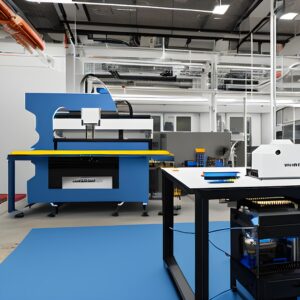
3. Ensuring Proper Ventilation
One of the most significant dangers of 3D printing is exposure to harmful fumes and particles. During the heating process, especially with materials like ABS, printers release VOCs and UFPs into the air. These pollutants can cause short- and long-term health problems, including respiratory issues, headaches, and skin irritation.
To ensure proper air quality, place your 3D printers in a well-ventilated room. An enclosed workspace with an exhaust fan system that vents fumes outdoors offers the best protection. Small spaces, like bedrooms, are unsuitable for printing due to limited airflow. If external venting isn’t possible, use an air filtration system equipped with HEPA filters and activated charcoal. Portable air purifiers are excellent for capturing fine particles, particularly for home users.
Printer manufacturers are now including built-in filtration systems in some models, a highly useful feature. However, filter maintenance is crucial to keep these systems effective. Position printers close to open windows or ensure constant airflow using external fans. These small adjustments can dramatically improve safety in your workspace.
Investing in ventilation is not optional—it is essential for comfortable, long-term 3D printing.
4. Fire Safety and Electrical Maintenance
Despite their cutting-edge appeal, 3D printers can still pose fire hazards if improperly maintained or operated. Examples of potential risks include thermal runaway (when the printer’s heating element overheats uncontrollably), malfunctioning power supplies, and poor wiring. Small electrical issues, such as loose connections, can cause sparks or shorts that lead to flames.
Be vigilant about maintenance. Regularly inspect your power cords, hotends, and mainboards for wear or debris and address any loose or exposed wiring immediately. Many modern printers come with fail-safes like thermal runaway protection—ensure they’re enabled to catch potential overheating before it poses a hazard.
Always have fire suppression equipment in close proximity. Keep a fire extinguisher rated for electrical fires (Class C) in your workspace, and consider placing fire-retardant mats underneath the printer. Setting up enclosed printers with fire-safe materials further reduces risks.
Finally, never leave a 3D printer running unattended for long periods. If remote monitoring options are available, such as mobile apps with camera feeds, leverage these tools to keep an eye on the printing process even when you need to step away.
Creating a Safe and Organized Workspace
Priority #1: Workspace Organization
A clutter-free workspace eliminates distractions and reduces the chances of accidents. Allocate shelving or storage containers specifically for tools, post-processing gear, and raw materials, ensuring that everything has its place. Avoid placing printers near flammable materials like papers, curtains, or wood panels.
Ensure your workspace is large enough to avoid crowding multiple machines, especially in professional environments managing several printers. Label essential tools clearly for quick accessibility. Add signage or instructional posters about operating safety features of your 3D printer. These are especially useful in shared workspaces.
Priority #2: Personal Protective Equipment (PPE)
Regular 3D printing sessions often involve tasks like leveling print beds, removing supports, or sanding down sharp edges. These tasks carry small but significant risks. Wearing gloves reduces the chances of cuts, burns, or chemical exposure. Noise-isolating headphones can protect your hearing if high-end printers produce noise exceeding comfortable levels for extended hours.
Priority #3: Emergency Preparation
Unexpected scenarios can happen, even in the safest environments. Keep a first-aid kit in your workspace, ensuring it is stocked with essentials like adhesive bandages for mild injuries and sterile saline for resin chemical splashes. Know the location of electrical breakers to quickly cut power in emergencies.
Finally, develop clear emergency protocols. Write out procedures for evacuating the workspace, contacting local firefighters, or notifying nearby personnel of hazards in a shared setting. Practice readiness regularly to instill confidence in your safety preparedness.
While 3D printing provides immense creative and industrial potential, proper safety measures are essential for maintaining long-term benefits. Protecting yourself and your workspace starts with understanding the risks associated with materials, ensuring effective ventilation, maintaining fire safety, and organizing an accessible, hazard-free environment. From hobbyists to industrial users, prioritizing safety ensures a more enjoyable, productive, and worry-free experience.
By applying these guidelines, you’ll manage risks effectively while enabling innovation—a balance that ensures 3D printing continues revolutionizing the world safely.
FAQs
1. Why is ventilation important for 3D printing?
Proper ventilation is crucial because 3D printing can release volatile organic compounds (VOCs) and ultrafine particles (UFPs) , especially when printing with materials like ABS or resin. These emissions can irritate the respiratory system and cause long-term health concerns. Ventilation systems or air purifiers equipped with HEPA and carbon filters help minimize exposure to these harmful pollutants, ensuring a healthier workspace.
2. Is it safe to leave a 3D printer running unattended?
Leaving a printer running unattended is generally not recommended due to the risk of malfunctions, such as thermal runaway or electrical issues, which could lead to fires. While some printers have safety features like automatic shutoff, it’s best to monitor your printer during operation or use remote monitoring solutions like cameras or apps to track progress in real-time.
3. How do I protect myself from harmful emissions during printing?
To minimize exposure to harmful gases and particles:
- Place your printer in a well-ventilated area or use an exhaust fan to direct fumes outdoors.
- Install a HEPA or carbon filter system if external ventilation isn’t possible.
- Avoid prolonged exposure by limiting time spent in poorly ventilated printing areas.
These measures significantly reduce the health risks associated with 3D printing emissions.
4. What type of protective gear should I use while 3D printing?
The right protective gear depends on the material and printer type:
- Gloves (nitrile): Protects against chemicals or resins.
- Safety glasses or goggles: Shields eyes from splashes, particularly when using resin printers.
- Respirators or dust masks: Essential for industrial printers that release fine powders or during sanding of printed parts.
Using adequate PPE ensures both short- and long-term safety while working with 3D printing materials.
5. How do I safely handle liquid resin for SLA printing?
Liquid resin is toxic and requires careful handling:
- Always wear nitrile gloves and safety goggles to avoid skin and eye contact.
- Work in a well-ventilated area to reduce exposure to resin fumes.
- Avoid spills, and keep resin containers sealed when not in use.
- Cure leftover resin under UV light before disposal, as uncured resin is considered hazardous waste.
6. Can 3D printer filaments like PLA and ABS be recycled?
Yes, but recycling depends on the material:
- PLA: While biodegradable, it typically requires industrial composting facilities. However, some specialized recycling programs accept PLA for reprocessing.
- ABS: Can often be recycled through appropriate facilities. Be sure to clean and separate failed parts.
Consider repurposing leftover filament for small prints or investing in filament recycling machines designed for hobbyists.
7. What are fire hazards associated with 3D printers?
Fire hazards stem from issues like:
- Overheating due to thermal runaway when components fail.
- Faulty wiring or damaged electrical connections.
- Flammable surroundings near the printer.
To mitigate risks, check wiring regularly, never leave printers running unattended, and keep a Class C fire extinguisher nearby.
8. How should I store 3D printing materials?
Store materials in environments that protect their integrity:
- Filaments: Use airtight bags or containers with desiccant packets to prevent moisture absorption.
- Resin: Keep in dark, UV-resistant bottles away from sunlight.
- Organize materials by type and label them clearly to prevent mix-ups.
Proper storage ensures materials last longer and remain safe to use.
9. Can I set up a 3D printing workspace in my bedroom?
It’s not recommended. Bedrooms typically lack proper ventilation, and emissions from 3D printers, especially models that work with ABS or resin, can linger in the air. Instead, use a dedicated workspace with access to external ventilation or install air purifiers to minimize pollutants.
10. What should I do if I accidentally spill liquid resin?
If liquid resin spills:
- Wear protective gloves to avoid direct skin contact.
- Immediately clean the spill using absorbent paper towels or rags.
- Dispose of contaminated materials as hazardous waste if the resin is uncured.
- Disinfect the surface thoroughly and ensure proper ventilation to remove fumes.
Acting quickly and safely can prevent accidents and minimize toxin exposure.
If you’re looking for reliable safety equipment and accessories for your 3D printing setup, visit MatterHackers for a wide selection of gloves, filtration systems, and workspace tools designed for safe and efficient printing.

